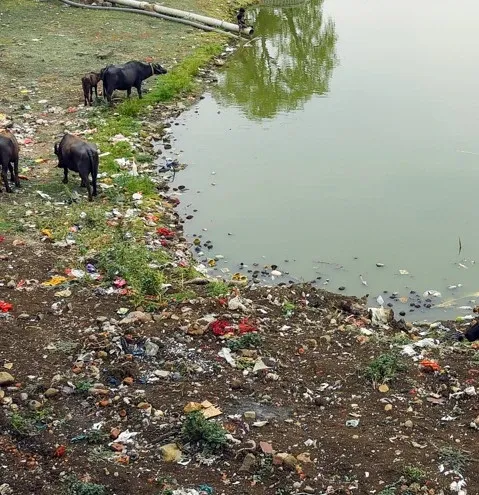Why Did TN Coastal Authority Fine NHAI for Dumping in Odiyur Lagoon?

Synopsis
Key Takeaways
- TNSCZMA imposes a fine on NHAI for environmental violations.
- Excavated materials were dumped into Odiyur Lagoon.
- Actions taken after a petition from Palluyir Trust.
- CRZ compliance is critical for ecological preservation.
- Judicial review is ongoing regarding this case.
Chennai, May 25 (NationPress) The Tamil Nadu State Coastal Zone Management Authority (TNSCZMA) has levied an environmental penalty of Rs 9.60 lakh on the National Highways Authority of India (NHAI) for breaching Coastal Regulation Zone (CRZ) regulations during the bridge construction as part of the East Coast Road (ECR) expansion project.
This fine was imposed due to the ongoing disposal of excavated materials into the ecologically sensitive Odiyur Lagoon in the Chengalpattu district. This decision was made during a recent meeting of the Authority, referencing the CRZ Notification, 2011, and the Environment (Protection) Act, 1986.
The move came after a petition by the Palluyir Trust for Nature Education and Research, which brought attention to the infractions occurring during the bridge's construction.
Following this complaint, the Authority instructed the District Collector of Chengalpattu to perform an on-site assessment to confirm if the alleged dumping was indeed happening within the CRZ zone and to take appropriate action.
The report from the District Collector validated that NHAI was dumping construction waste into Odiyur Lagoon, which was a clear violation of the CRZ clearance stipulations.
As per the original CRZ clearance granted to NHAI in October 2020, one of the primary conditions was to refrain from dumping excavated materials in water bodies or their vicinities.
Furthermore, the site was required to be restored to its near-original state upon the completion of the bridge construction. The Authority noted that NHAI had not adhered to these requirements.
Consequently, the TNSCZMA reported the violation to the Ministry of Environment, Forest and Climate Change (MoEFCC), which instructed the state authority to take action against the project proponent.
The Tamil Nadu Pollution Control Board (TNPCB) calculated the environmental compensation based on the duration and impact of the violation, employing a formula developed by the Central Pollution Control Board (CPCB).
The Authority approved the computed compensation and directed the Member Secretary of TNSCZMA to initiate punitive measures against NHAI under applicable environmental laws.
It's important to note that this bridge construction is part of the Chennai-Puducherry expansion of the ECR under Phase 1 of the Bharatmala Pariyojana project.
The project entails the realignment of the existing two-lane 240-meter bridge over Odiyur Lake, linking Paramankeni and Mudaliarkuppam villages in Cheyyur taluk. To enhance road geometry and achieve a design speed of 100 km/hr, NHAI proposed a new 490-meter bridge with an improved approach curve.
Meanwhile, this issue is also under judicial review, with the southern bench of the National Green Tribunal (NGT) examining a related case concerning the debris dumping into Odiyur Lagoon.





